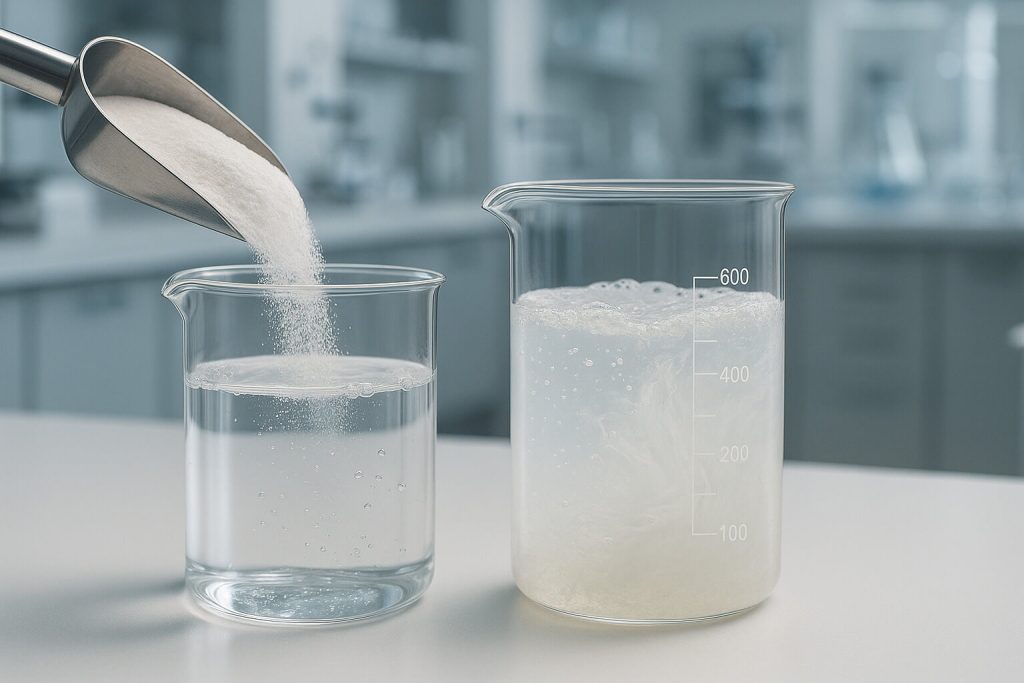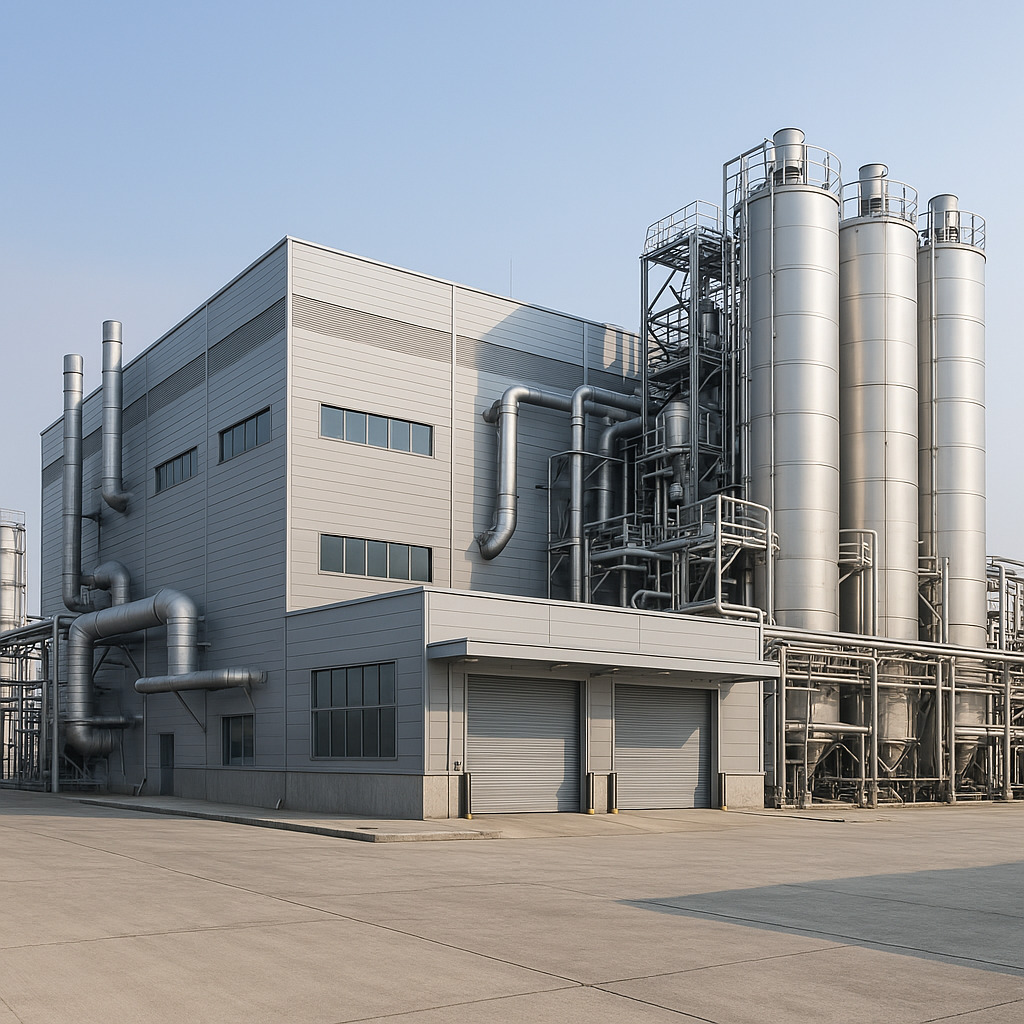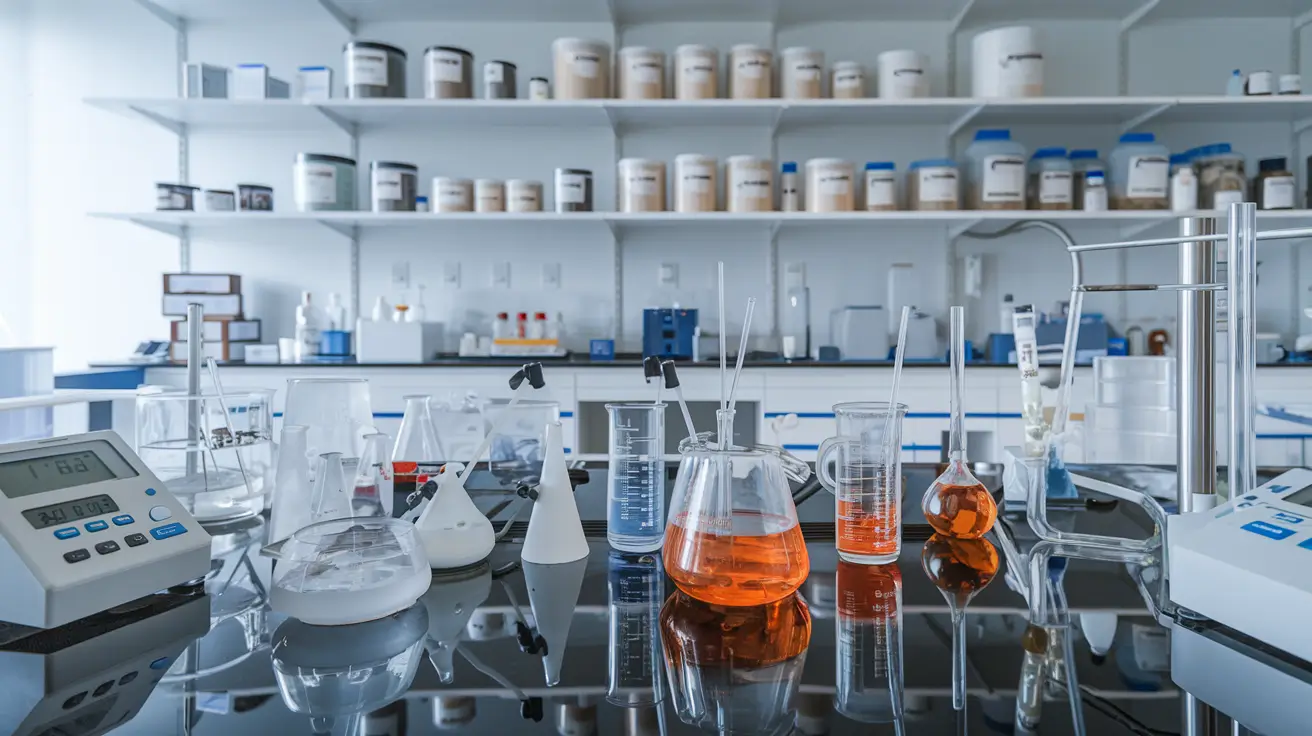Understanding the significance of molecular weight for hydroxypropyl methylcellulose (HPMC) applications is crucial for professionals in various industries. HPMC is a versatile polymer widely used in the food, pharmaceutical, and construction sectors due to its unique properties. The molecular weight of HPMC plays a pivotal role in determining its viscosity, solubility, and overall functionality. This article aims to provide a comprehensive exploration of how molecular weight influences HPMC’s properties and applications, thereby aiding decision-makers in selecting the appropriate grade for their specific needs.

1. What is HPMC and Why Does Molecular Weight Matter?
Hydroxypropyl methylcellulose (HPMC) is a cellulose derivative that is essential in various industrial applications. But here’s the kicker: the molecular weight of HPMC significantly affects its performance characteristics, impacting its effectiveness in real-world applications. HPMC is synthesized through the reaction of cellulose with methyl and hydroxypropyl groups, making it a water-soluble polymer widely employed as a thickener, binder, and emulsifier.
In practical terms, molecular weight refers to the size of the polymer chains that make up HPMC. Higher molecular weight usually leads to increased viscosity and improved hydrogel characteristics, making it ideal for formulations that require thickening and binding. Conversely, low molecular weight HPMC offers faster solubility in water, which can be beneficial in applications needing quick hydration, such as instant soups and sauces.
Understanding how molecular weight influences the properties of HPMC helps businesses make informed decisions regarding their formulations. It’s not just about choosing HPMC; it’s about selecting the right molecular weight to achieve the desired performance outcome. By addressing molecular weight considerations upfront, manufacturers can ensure product consistency, stability, and optimal functionality across various applications.
| Aspect | Importance |
|---|---|
| Viscosité | Higher molecular weight leads to greater viscosity |
| Solubilité | Lower molecular weight allows for quick dissolution |
| Gel Formation | High molecular weight promotes better gel properties |
2. How Does Molecular Weight Affect HPMC Properties?
The relationship between molecular weight and HPMC properties is foundational to its functionality in various applications. What’s the real story? Molecular weight directly influences key properties, including viscosity, gel formation, and solubility, all of which play critical roles in product performance.
Higher molecular weight HPMC typically exhibits greater viscosity. This characteristic is particularly useful in formulations requiring significant thickening, such as in pharmaceuticals, where ensuring that active ingredients remain evenly distributed is vital. In contrast, lower molecular weight HPMC can dissolve rapidly in cold water, making it suitable for applications that demand quick hydration, such as gelled desserts and sauces.
Moreover, the gel-forming ability of HPMC is also affected by molecular weight. In food products that utilize thickening agents, higher molecular weight HPMC can create a firmer gel, providing a more desirable texture. Similarly, in pharmaceutical applications, HPMC’s gel strength influences the release rate of active ingredients, thereby affecting therapeutic outcomes.
Knowing the implications of molecular weight on HPMC properties allows formulators to target specific characteristics to perfectly align with both consumer expectations and regulatory requirements, thereby enhancing product quality and effectiveness.
| Propriété | poids moléculaire élevé | Faible poids moléculaire |
|---|---|---|
| Viscosité | Higher viscosity, ideal for thickening | Lower viscosity, better for quick hydration |
| Gel Strength | Stronger gels suitable for food and pharmaceutical applications | Weaker gels, quicker dissolution |
| Solubilité | Slower in cold water, better for controlled applications | Faster in cold water, ideal for instant products |
3. What Are the Different Molecular Weight Categories of HPMC?
Understanding the categories of HPMC based on molecular weight is vital for selecting the right product for specific applications. Ready for the good part? HPMC can generally be classified into three main categories: low, medium, and high molecular weights.
Low molecular weight HPMC grades are known for their rapid solubility in cold water, making them particularly advantageous for instant formulations. These grades are commonly used in products such as sauces, soups, and nutritional powders where quick hydration is essential.
Medium molecular weight HPMC provides a balance between solubility and viscosity. They serve as versatile solutions across various applications, from food to pharmaceutical products, making them a popular choice among manufacturers who require flexibility in formulation.
High molecular weight HPMC is primarily characterized by its superior thickening properties and gel strength. It’s widely employed in applications such as adhesives, construction materials, and dental products, where robust binding and stability are paramount.
Selecting the appropriate HPMC grade according to its molecular weight can enhance formulation performance and ensure the end product meets specific application requirements. The right choice leads to improved efficiency and effectiveness in achieving desired results.
| Catégorie HPMC | Caractéristiques | Applications courantes |
|---|---|---|
| Faible poids moléculaire | Quick dissolution and low viscosity | Instant foods, nutritional powders |
| Medium Molecular Weight | Balanced viscosity and solubility | Food stabilizers, pharmaceutical products |
| poids moléculaire élevé | High viscosity and gel strength | Construction materials, adhesives |
4. What Role Does Molecular Weight Play in Specific Industries?
Molecular weight plays a crucial role in how HPMC is utilized across different industry sectors. This is where it gets interesting: each industry leverages molecular weight-based properties to achieve specific outcomes relevant to their products.
In the pharmaceutical industry, HPMC is vital for its binding properties and controlled release functionalities. High molecular weight HPMC ensures that tablets maintain their integrity during manufacturing and delivery, while also controlling the rate of drug release. This leads to enhanced patient compliance and effective therapeutic action.
The food industry benefits from HPMC’s thickening properties, where molecular weight significantly impacts the texture and mouthfeel of food products. High molecular weight HPMC can create a creamy texture in sauces, while low molecular weight HPMC can help in instant pudding formulations by allowing for rapid gel formation.
In construction, HPMC is frequently added to mortars and tile adhesives. The choice of molecular weight affects adhesion and workability, which are essential for long-lasting durability in construction applications. High molecular weight HPMC offers superior adhesion, necessary for ensuring that tiles remain fixed under varying conditions.
Recognizing how molecular weight influences HPMC applications across different industries empowers manufacturers to create tailored solutions that address the specific needs of their customers.
| Industrie | Role of Molecular Weight | Principaux avantages de l’HPMC |
|---|---|---|
| Pharmaceutique | Affects binding and release characteristics | Improved therapeutic performance |
| Nourriture | Influences texture and mouthfeel | Enhanced product quality and consumer appeal |
| Construction | Impacts adhesion and workability | Increased durability and reliability |
5. How Can Molecular Weight Influence Product Formulation?
Formulating products with HPMC requires careful consideration of molecular weight to achieve optimal performance. But here’s the kicker: the molecular weight can drastically influence everything from stability to consumer experience.
When selecting an HPMC grade, formulators must consider the end application. For instance, high molecular weight HPMC is appropriate for preserving texture and stability in foods that need to remain intact and robust during cooking or processing. Conversely, for products that demand quick mixing and hydration, a lower molecular weight would enhance ease of use and performance.
Testing formulations with varying molecular weights also helps identify the ideal choice for achieving desired viscosity or gel strength. Through trials, formulators can uncover how different grades respond to physical and chemical interactions within the product, tailoring the HPMC to enhance performance attributes.
Moreover, refrigerators, freezers, and other storage methods can influence product efficacy, where molecular weight may alter performance during temperature fluctuations. Formulators must ensure that HPMC works effectively within the designated environmental parameters to maintain optimal performance.
By identifying the best molecular weight for specific formulations, manufacturers can drive product success in competitive markets, ensuring that they create efficient, appealing, and high-quality products.
| Formulation Factor | Role of Molecular Weight | Recommended Approach |
|---|---|---|
| Desired Viscosity | Higher molecular weight increases viscosity | Select based on thickening needs |
| Stability and Shelf Life | Molecular weight affects stability in varying temperatures | Conduct stress tests on formulations |
| Consumer Experience | Influences texture and performance | Tailor the molecular weight to enhance usability |
6. What Are the Implications of Molecular Weight on HPMC’s Shelf Life?
Molecular weight has significant implications for the shelf life of HPMC-containing products. What’s the real story? Higher molecular weight can contribute to enhanced stability and longevity, while lower molecular weight might lead to faster degradation under certain conditions.
In pharmaceuticals, HPMC with high molecular weight can ensure that formulations maintain their physical integrity over time. This is critical for effective drug delivery, as stability influences not only shelf life but also the efficacy of the medication.
In the food sector, molecular weight can affect how products respond to temperature fluctuations. Higher molecular weight HPMC tends to provide better viscosity stability, which contributes to maintaining texture and consistency throughout a product’s life cycle.
Conversely, products with low molecular weight HPMC may lose their efficacy more quickly, particularly in challenging environments like humidity or temperature extremes. Therefore, formulators must consider molecular weight during product development to ensure that the shelf life meets consumer expectations.
Understanding how molecular weight influences shelf life helps manufacturers set realistic expiration dates and avoid unnecessary waste, while also ensuring that consumers receive effective products.
| Poids moléculaire | Implications for Shelf Life | Recommended Practices |
|---|---|---|
| poids moléculaire élevé | Enhanced stability, extended shelf life | Ideal for pharmaceuticals and long-lasting foods |
| Faible poids moléculaire | Reduced stability, shorter shelf life | Use in products with shorter consumption cycles |
7. How Do Regulatory Standards Relate to Molecular Weight of HPMC?
Regulatory standards surrounding HPMC are critical for manufacturers in the pharmaceutical, food, and construction sectors. But here’s the kicker: compliance with these standards often hinges on the molecular weight of HPMC used in formulations.
In the pharmaceutical industry, regulatory agencies like the FDA and EMA set strict guidelines regarding acceptable molecular weight ranges for HPMC. These regulations ensure that the HPMC maintains its expected performance in drug formulations, particularly in terms of binding and controlled release properties.
In food applications, HPMC also faces scrutiny from food safety authorities. Regulations dictate acceptable levels of HPMC and its molecular weight to ensure consumer safety. Manufacturers must provide documentation on the origin and molecular weight of HPMC to demonstrate compliance with food safety regulations.
In construction, HPMC products must meet building codes and performance standards that vary by region. Manufacturers must ensure that the molecular weight of HPMC meets the requirements for the intended application, whether it’s in adhesives, mortars, or other construction materials.
Adhering to regulatory standards not only protects manufacturers from legal ramifications but also reassures consumers about the safety and efficacy of the products they use.
| Regulatory Area | Molecular Weight Considerations | Compliance Outcomes |
|---|---|---|
| Médicaments | Must meet specific molecular weight standards | Ensures drug efficacy and safety |
| Industrie alimentaire | Acceptable levels and molecular weight specifications | Maintains consumer safety and product quality |
| Construction | Compliance with local building codes | Ensures performance and reliability of materials |
8. What Trends Are Emerging Related to HPMC and Molecular Weight?
The landscape of HPMC utilization is continuously evolving, influenced by emerging trends that may reshape how its molecular weight is perceived in various applications. Ready for the good part? Manufacturers are increasingly focusing on sustainability, cleaner labels, and technological advancements affecting HPMC’s molecular weight utilization.
One significant trend is the rising demand for sustainable and environmentally friendly products. As consumers become more conscientious about the ingredients in their products, manufacturers are turning to HPMC for its natural origins and biodegradable properties. By utilizing higher molecular weight HPMC, manufacturers can develop products with improved functionality while satisfying consumer demand for greener alternatives.
Another trend is the growing interest in clean-label formulations. As a result, many manufacturers are examining how different molecular weights impact the perception of their products. HPMC’s versatility allows it to fit into various clean-label formulations without compromising functionality.
Technological advancements are also changing the landscape of how HPMC is used. Innovations in production processes and formulation techniques enable manufacturers to create tailored HPMC grades that maximize the benefits of specific molecular weights, allowing for improved performance across applications.
By staying ahead of these emerging trends, businesses can ensure they remain competitive, meeting market demands while optimizing their HPMC applications.
| Tendance émergente | Implications for HPMC | Strategic Considerations |
|---|---|---|
| Durabilité | Increased use of natural and biodegradable HPMC | Align with consumer demands |
| Clean-Label Formulations | Focus on transparency and quality | Reassess molecular weight selections |
| Innovations technologiques | Tailored HPMC products for enhanced applications | Invest in R&D for improved formulations |
9. How to Optimize HPMC Selection Based on Molecular Weight?
Choosing the correct HPMC grade based on molecular weight requires a strategic approach. This is where it gets interesting: the appropriate selection can dramatically affect the performance and effectiveness of products across different applications.
First, start by evaluating the specific needs of the application. For instance, if a product requires rapid hydration, opt for a low molecular weight HPMC. If viscosity or gel strength is the priority, consider high molecular weight options.
Next, engage in testing and trials to determine the best molecular weight for achieving desired properties. Formulators should conduct rigorous testing on how various HPMC grades interact with other formulation ingredients to refine performance characteristics.
Additionally, consider the end-user’s experience. Products with too high or too low molecular weight may not deliver the desired results, leading to customer dissatisfaction and reduced sales. Understanding consumer expectations can guide the optimal HPMC selection process.
Finally, stay abreast of market trends and advancements in HPMC technology. New formulations or modified methodologies may open doors for previously unexplored opportunities, allowing businesses to improve their offerings continuously.
| Étape | Recommended Actions | Résultat souhaité |
|---|---|---|
| Evaluate Application Needs | Define viscosity and functionality requirements | Align HPMC grade to application specifications |
| Conduct Testing | Perform trials with varying molecular weights | Identify optimal grade for product performance |
| Understand End-User Experience | Gather consumer feedback | Ensure product meets market expectations |
10. Where Can You Find Reliable Information on HPMC and Molecular Weight?
Access to reliable information is key for professionals looking to deepen their understanding of HPMC and its molecular weight implications. What’s the real story? A variety of resources are available to assist manufacturers in gathering essential data.
First and foremost, leading suppliers and manufacturers of HPMC often provide thorough technical data sheets that detail product specifications, including molecular weight. These documents serve as vital references for formulators.
Industry publications, journals, and databases are excellent sources for the latest research on HPMC applications and molecular weight studies. Regularly reviewing articles and findings helps professionals stay informed about advancements and emerging trends in HPMC utilization.
Participating in relevant industry conferences and networking events can also provide valuable insights. Engaging with experts and peers enables professionals to share experiences, challenges, and solutions related to HPMC.
Lastly, online resources such as blogs, webinars, and forums offer platforms for information exchange. The community-based knowledge can be a great tool for troubleshooting specific application questions.
By leveraging these resources, industry professionals can enhance their understanding of HPMC, empowering them to make informed decisions that drive success in their respective markets.
| Resource Type | Importance | Exemples |
|---|---|---|
| Suppliers and Manufacturers | Offer technical specifications and product data | Product datasheets, safety data sheets |
| Industry Publications | Provide cutting-edge research and insights | Journals, technical articles |
| Networking and Conferences | Facilitate sharing of best practices | Workshops, seminars |
Rubrique FAQ
Q1 : Qu'est-ce que l'HPMC ?
Hydroxypropyl methylcellulose (HPMC) is a cellulose derivative that serves as a thickener, binder, and emulsifier, commonly used in the food, pharmaceutical, and construction industries.
Q2 : How does molecular weight affect HPMC?
Molecular weight influences the viscosity, solubility, and gel formation properties of HPMC, impacting performance in various applications.
Q3 : Why is molecular weight important in pharmaceuticals?
Molecular weight is crucial for drug formulations as it affects the binding properties and release characteristics, ensuring medication efficacy.
Q4 : How can manufacturers ensure compliance with HPMC standards?
Manufacturers can ensure compliance by adhering to regulatory guidelines regarding molecular weight and sourcing high-quality HPMC from reputable suppliers.
Q5 : What trends are shaping the use of HPMC?
Current trends include a focus on sustainability, demand for clean-label products, and technological advancements in HPMC formulation and utilization.




